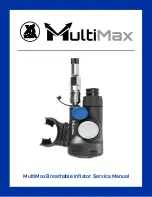
Concepts and features
R&S
®
ZNB/ZNBT
171
User Manual 1173.9163.02 ─ 62
TRL with several Lines and with TRM
The system of equations that have to be solved for the error terms exhibits singularities
whenever the length difference ΔL between the Through and the Line is an integer
multiple of half of the wave length:
2
n
L
As a rule, singularities are avoided with sufficient accuracy if the phase shift resulting
from the (electric) length difference between the Through and the Line standard is
between 20° and 160°. This corresponds to a ratio of 1:8 for the start and stop fre-
quency of the calibrated sweep range.
To shift the calibrated sweep range to smaller or larger frequencies, you can use a lon-
ger or shorter Line. To extend the calibrated range, use one of the following methods:
●
Perform TRL calibration with two or three different Line standards. With an appro-
priate length of the Lines, the ratio for the start and stop frequency of the calibrated
sweep range can increase to approx. 1:64 (for 2 lines) or 1:512 (for 3 lines).
●
In the low-frequency domain where TRL becomes inaccurate, replace TRL by TRM
calibration. See
"Low-frequency extension with TRM"
The methods can be combined or used separately. The list of measured standards in
the calibration step for TRL calibration is extended if the calibration kit in use contains
the necessary standards:
●
A 2-line (3-line) calibration requires two (three) different Lines of matching gender.
The lines must be measured between any combination of two ports.
●
A TRM extension at low frequencies requires either a Match or a Sliding Match
standard. The standard must be measured at each port.
The complete list of measured standards for a two-port calibration is shown below.
●
For a
TRL calibration with 1 Line
, the Reflect standard at both ports, the
Through, and one Line standard must be measured.
●
For a
TRL calibration with 2 Lines
, a second Line standard must be measured in
addition.
●
For a TRM extension, the Reflect and Match standards at both ports (and the
Through) must be measured. See also
Chapter 4.5.2.3, "Sliding Match standards"
The TRL calibration is valid when the standards for a TRL calibration with 1 line have
been measured. The TRL extensions are applied automatically if the necessary stand-
ards have been measured.
Calibration
















































